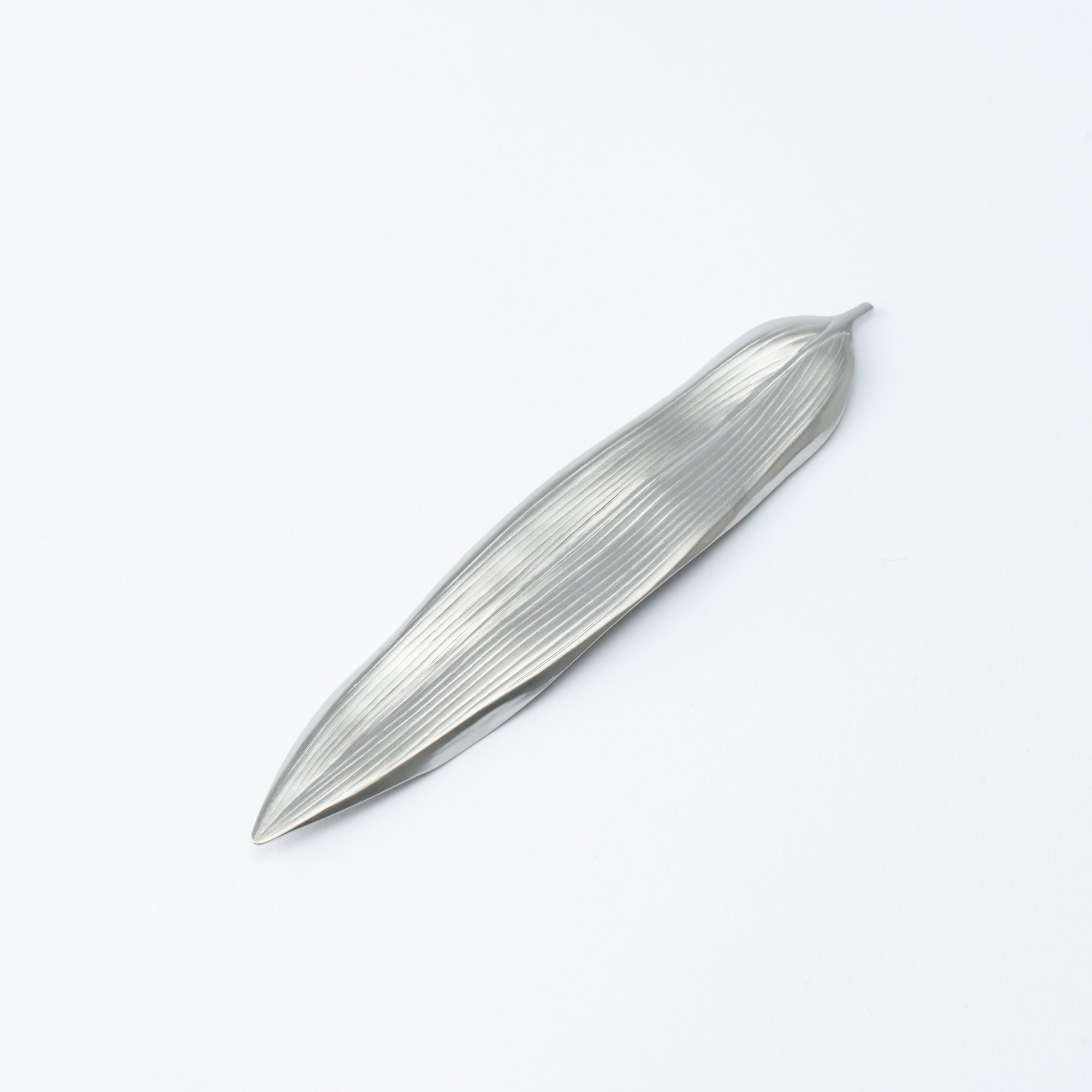
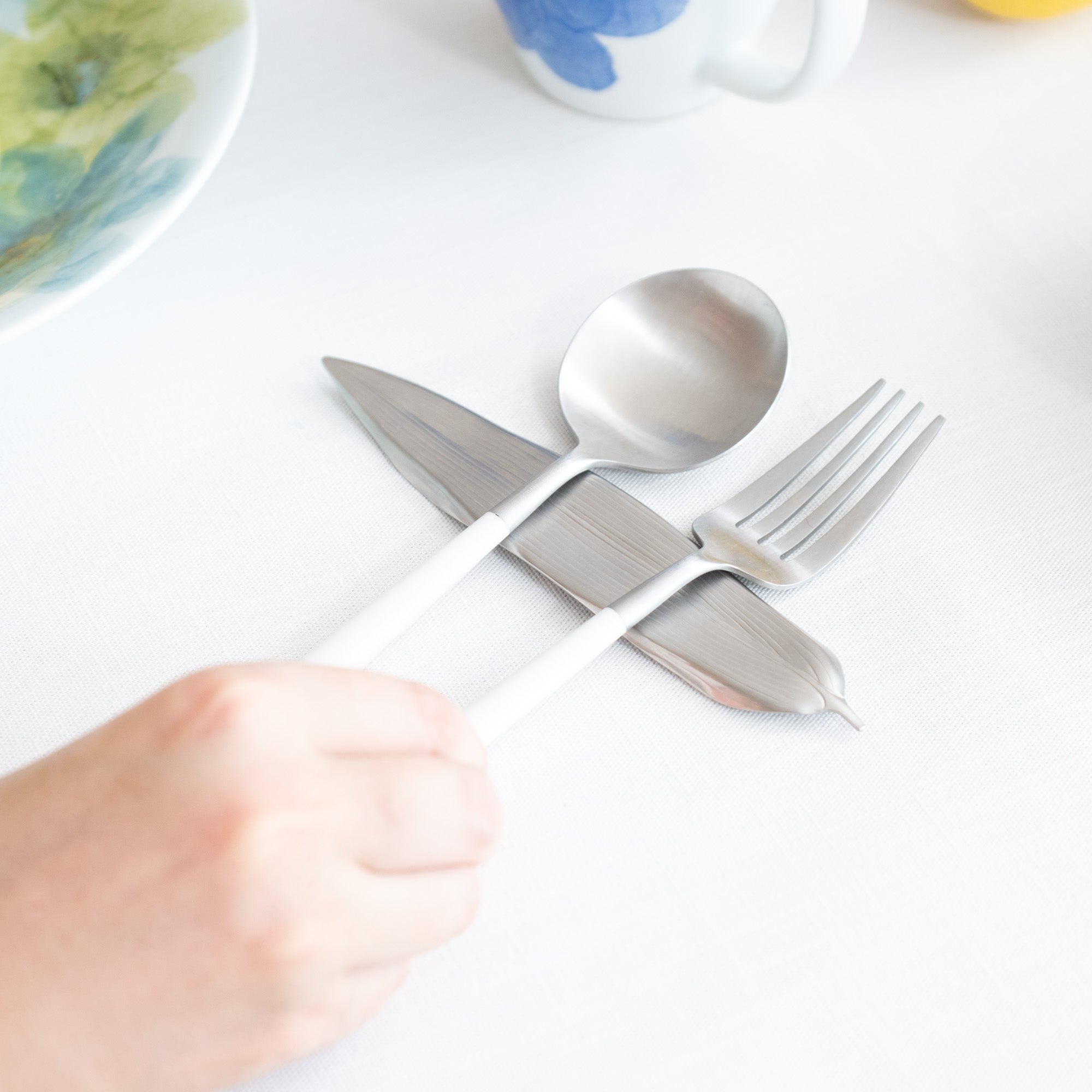

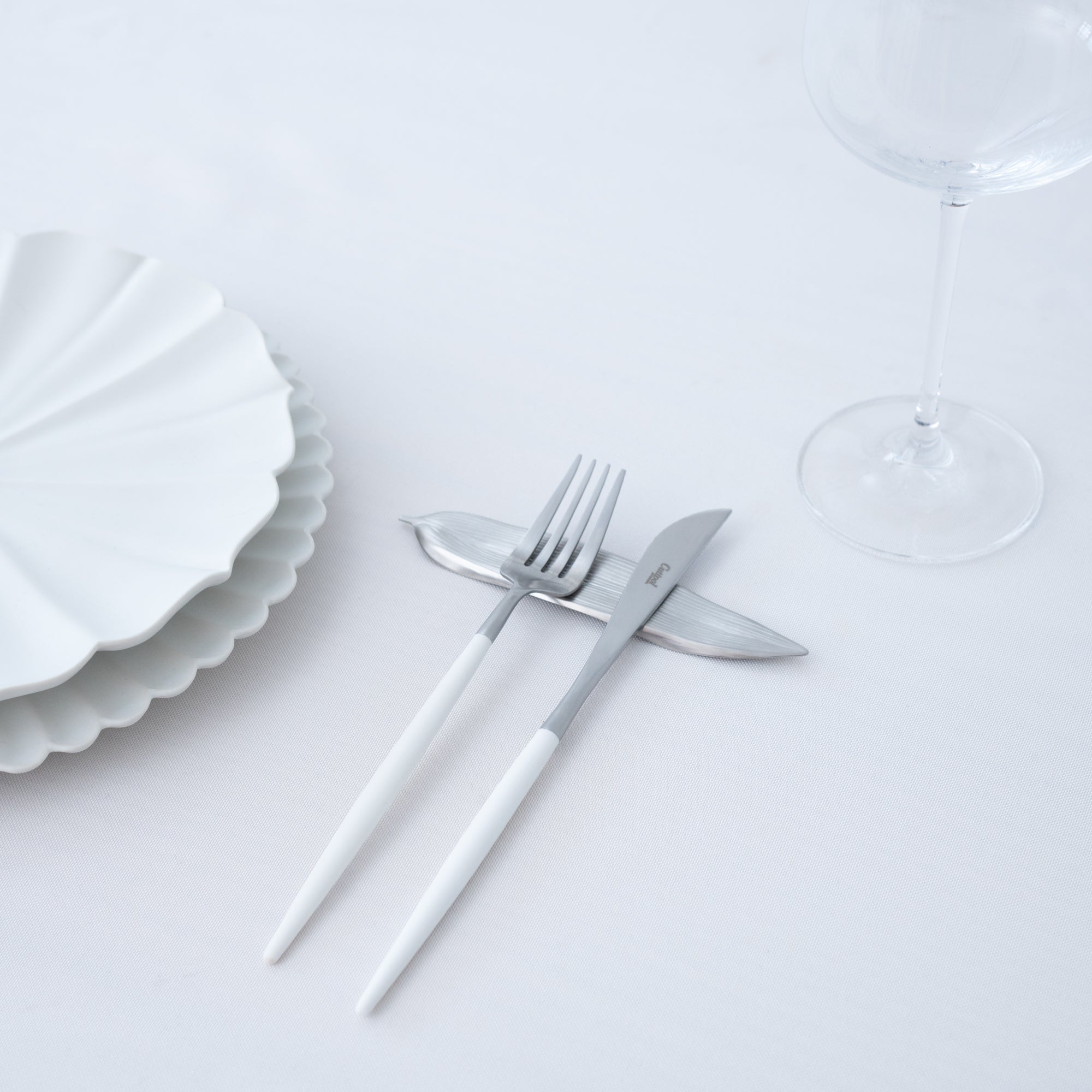
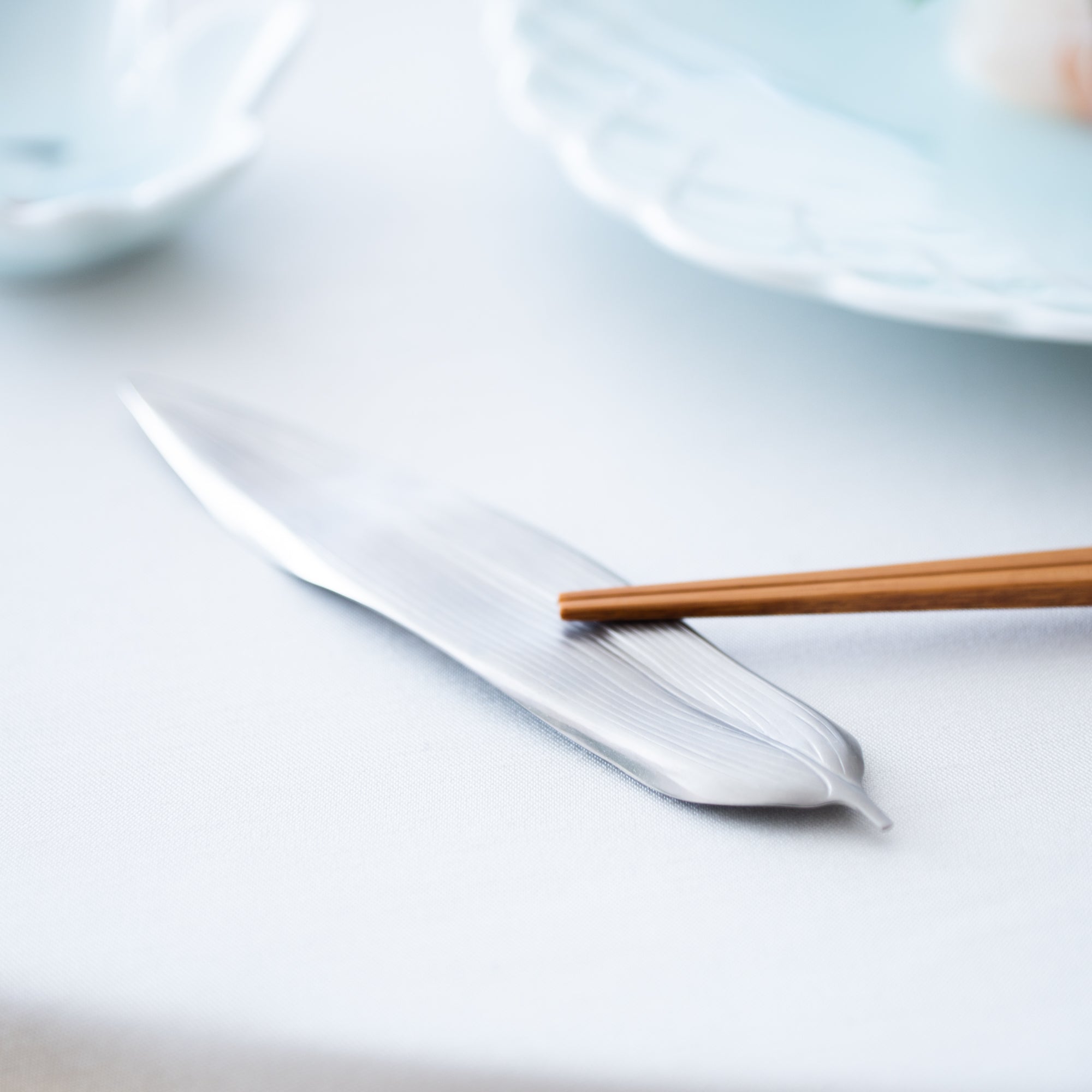
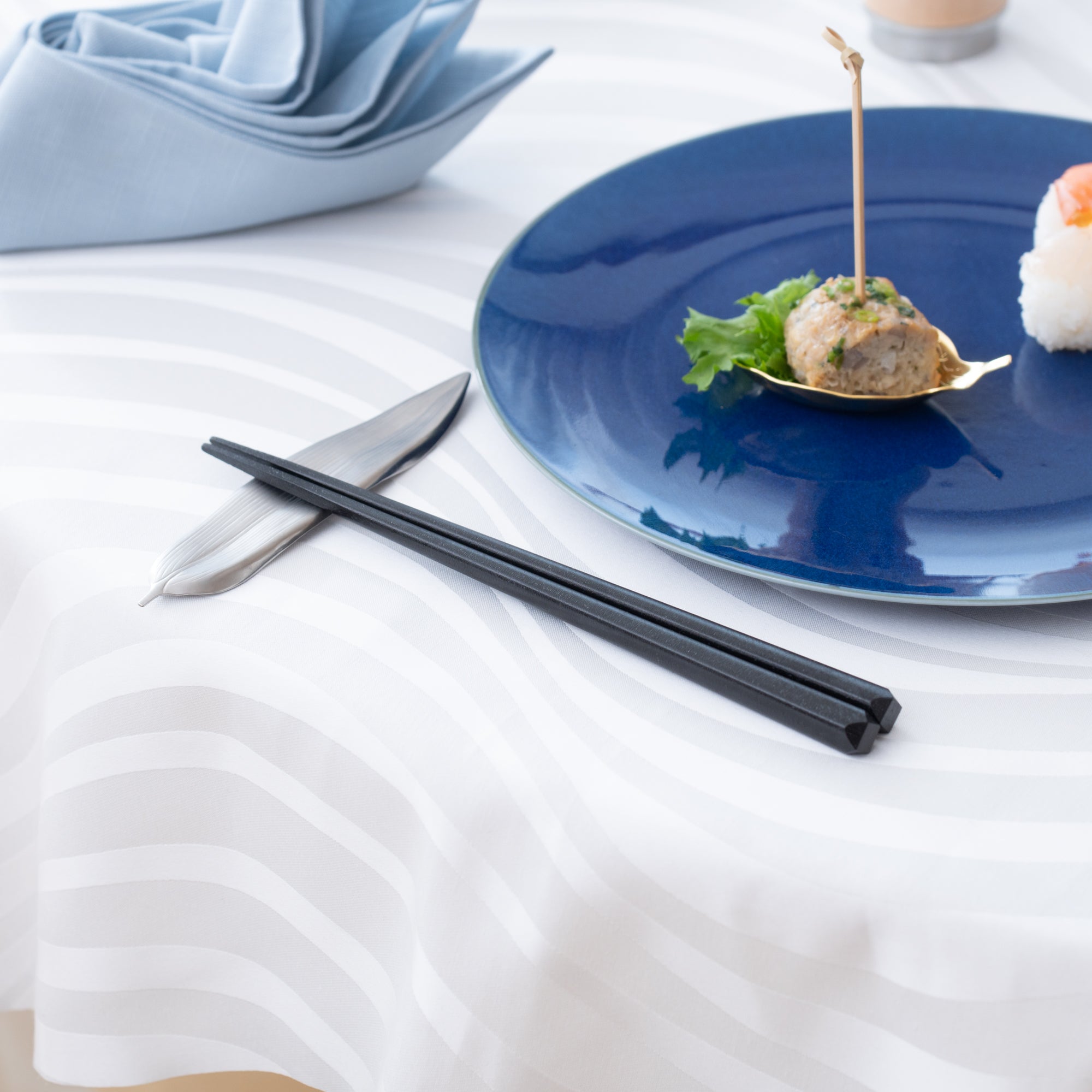
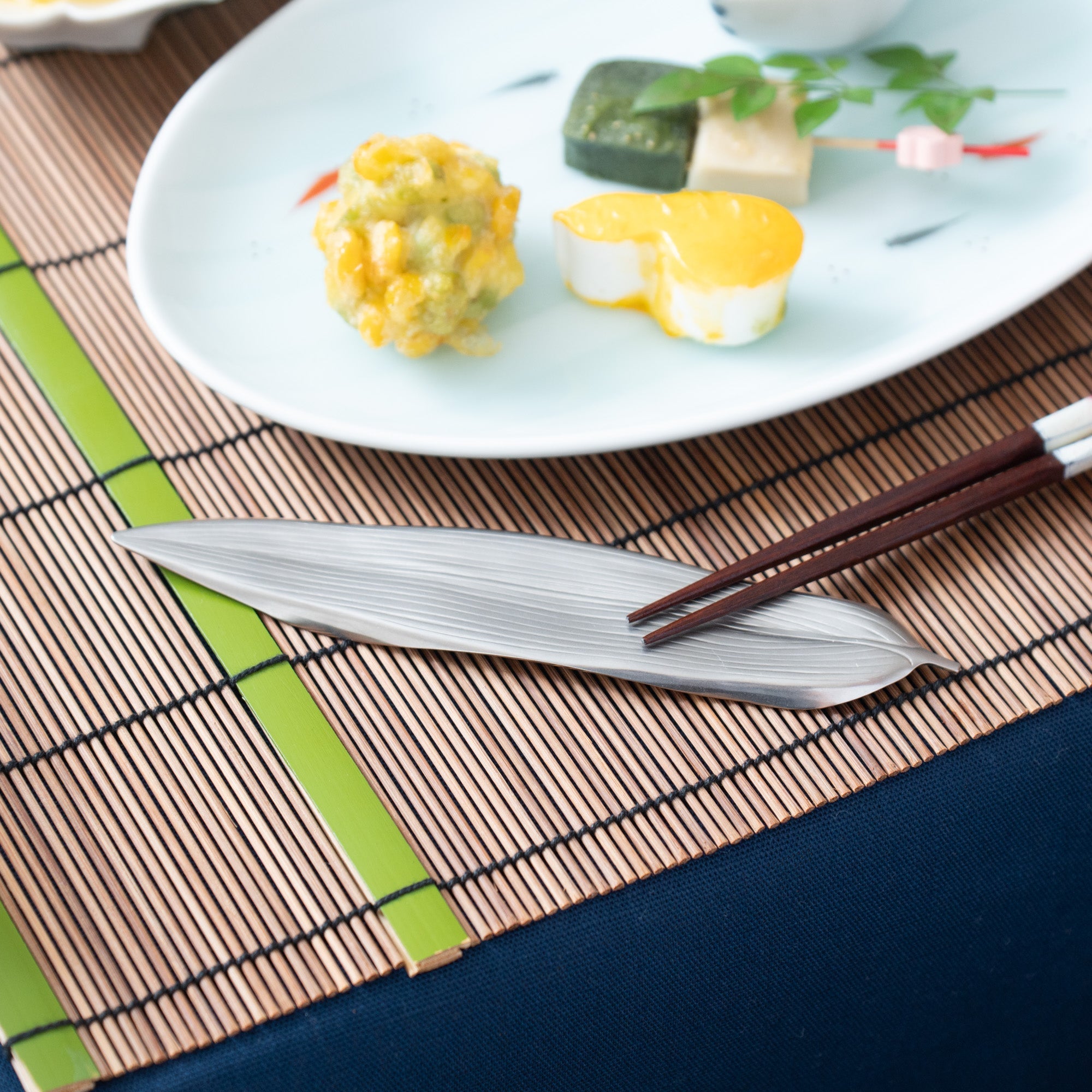
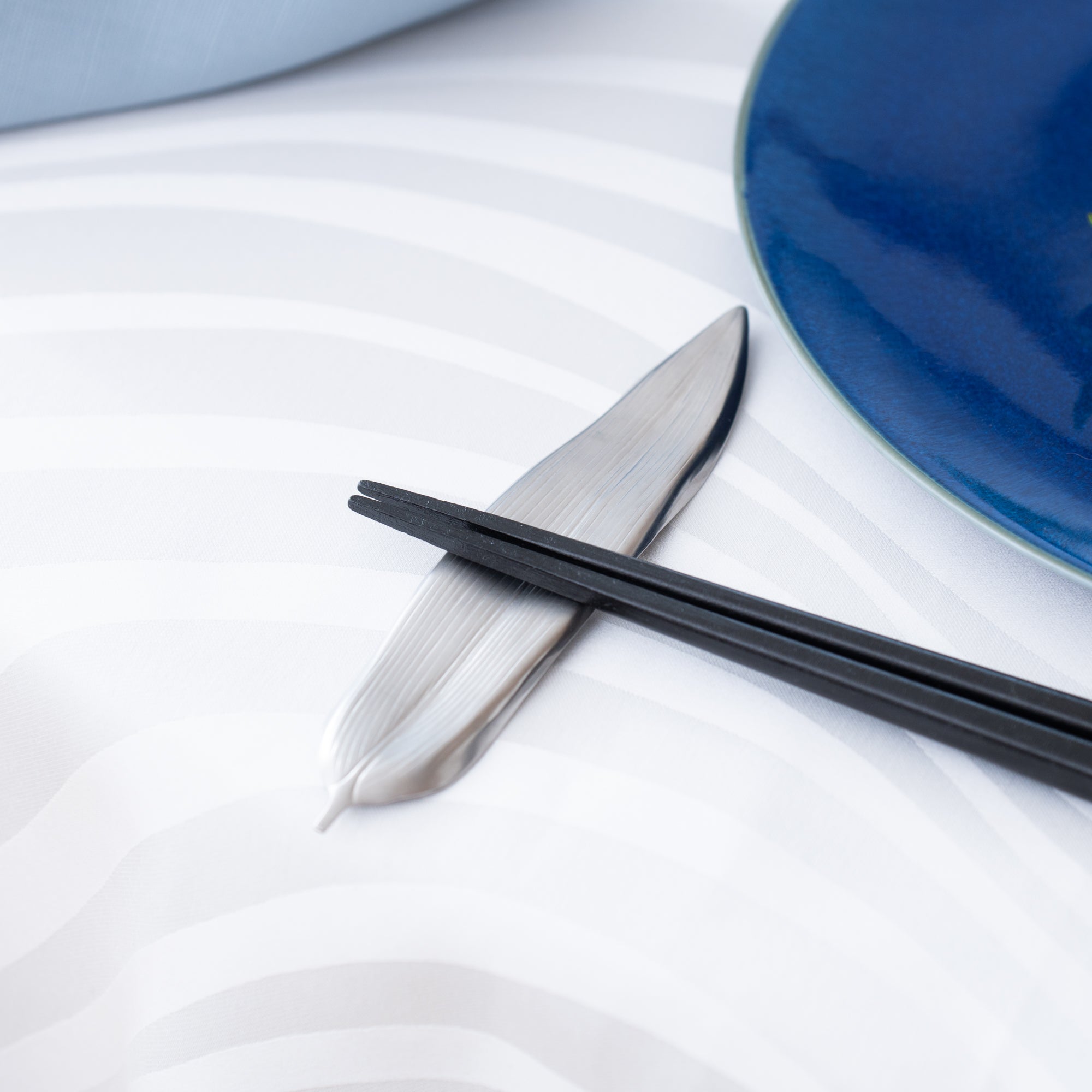
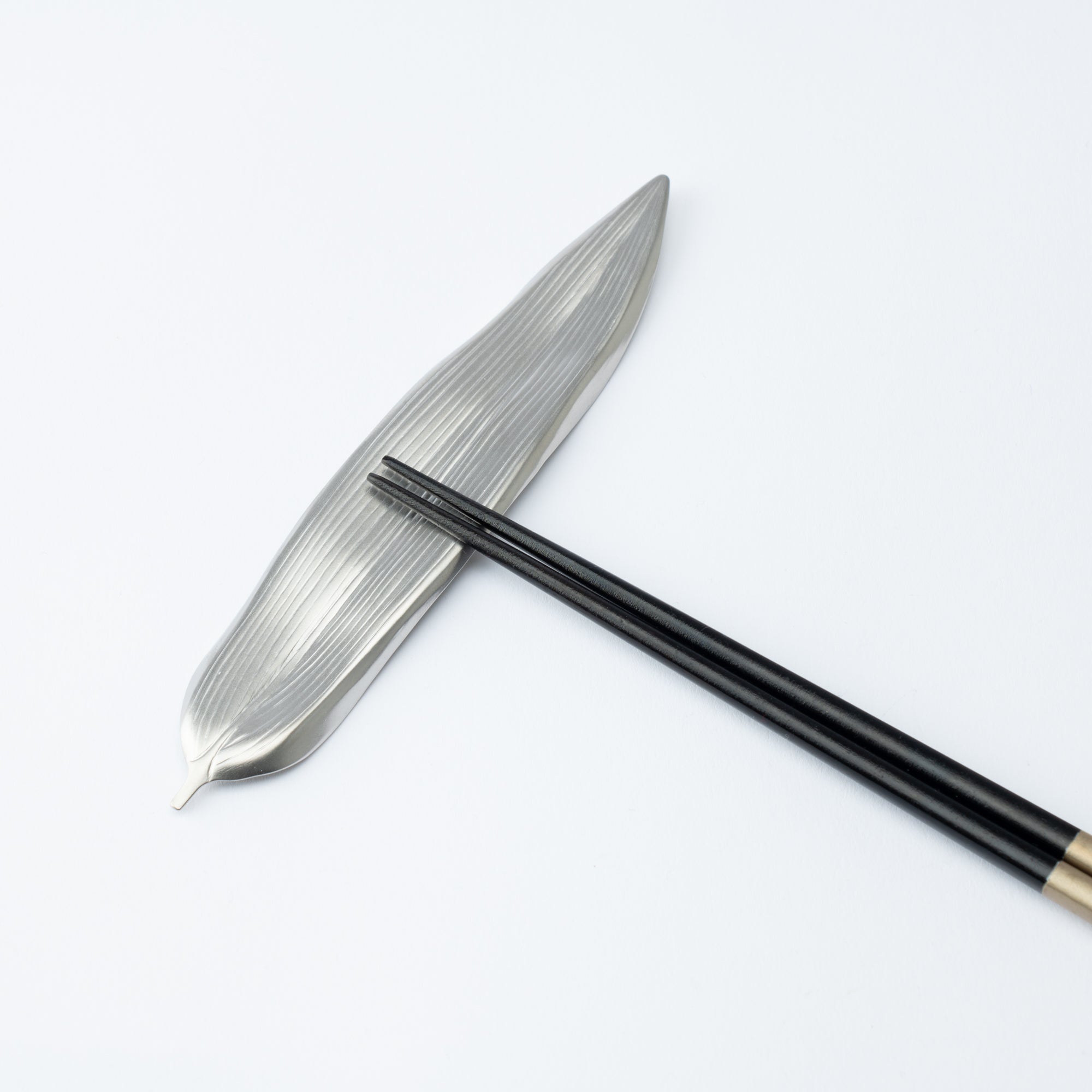
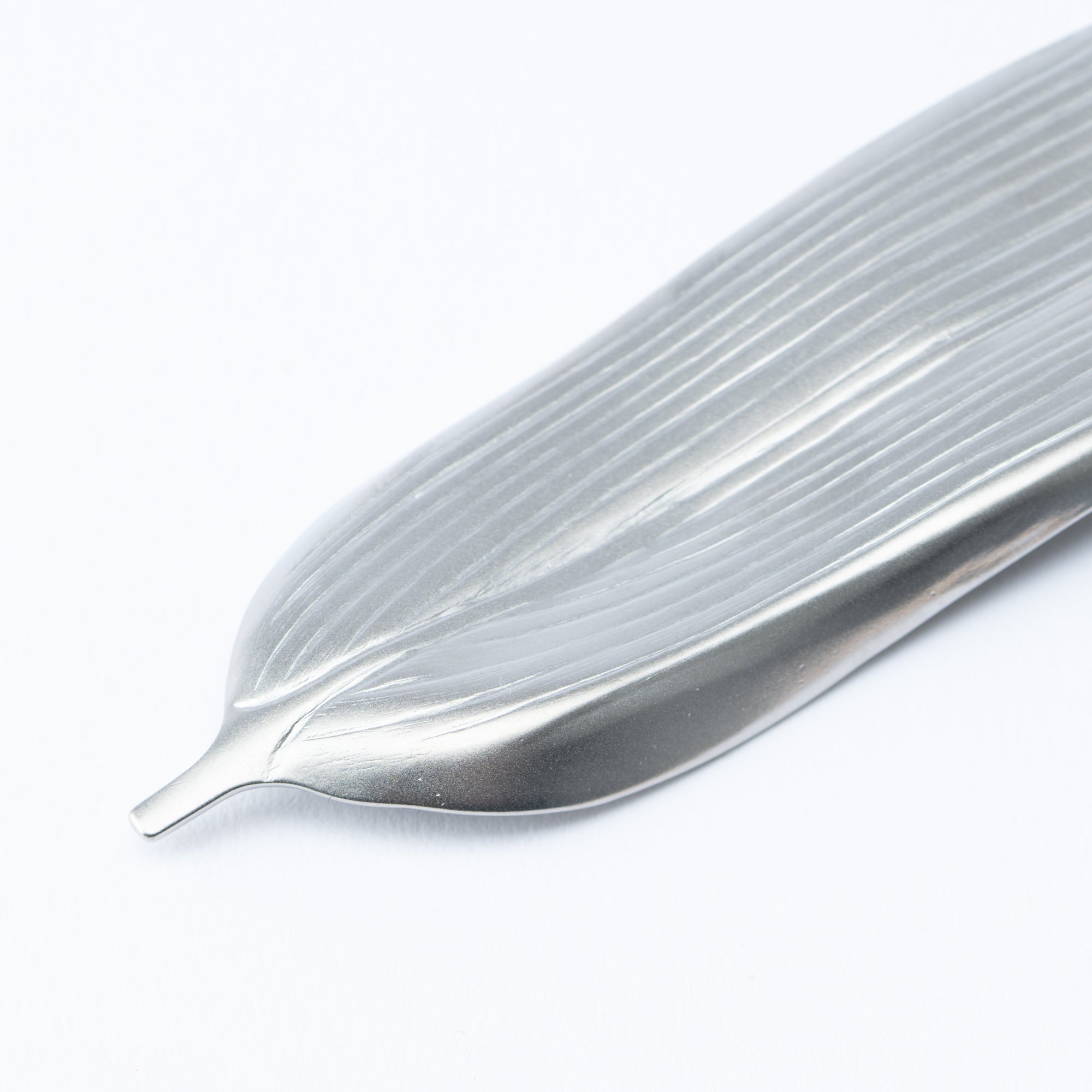
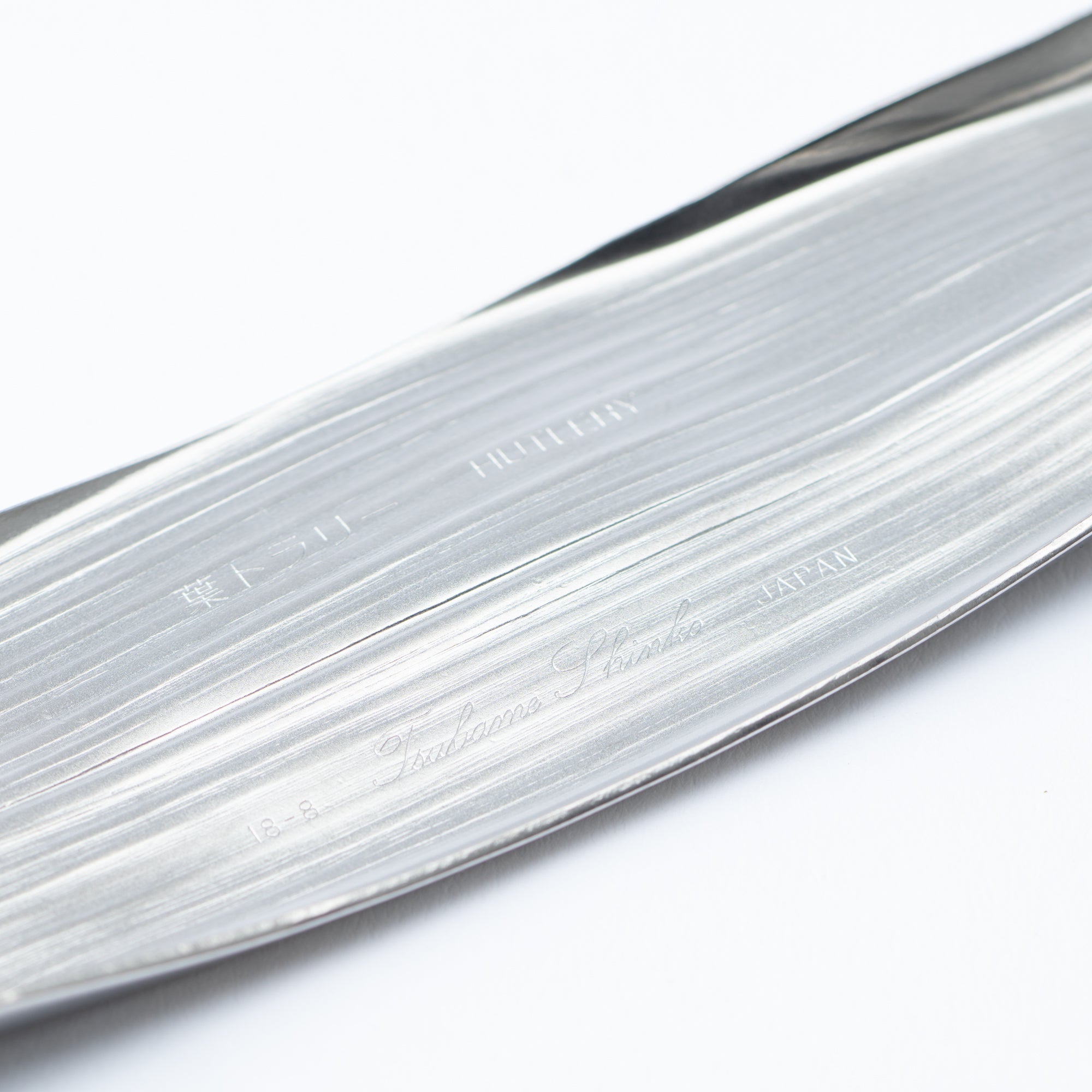
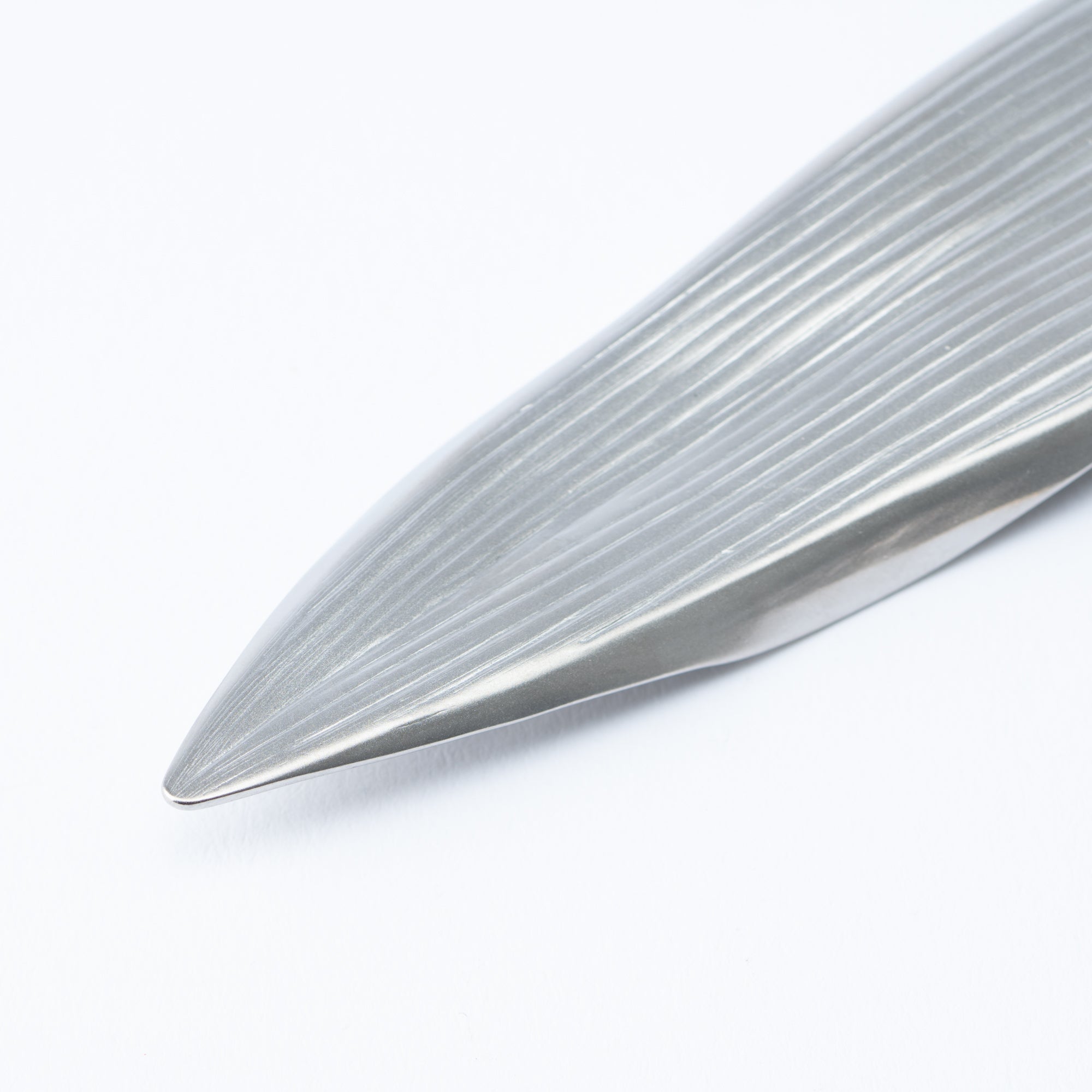
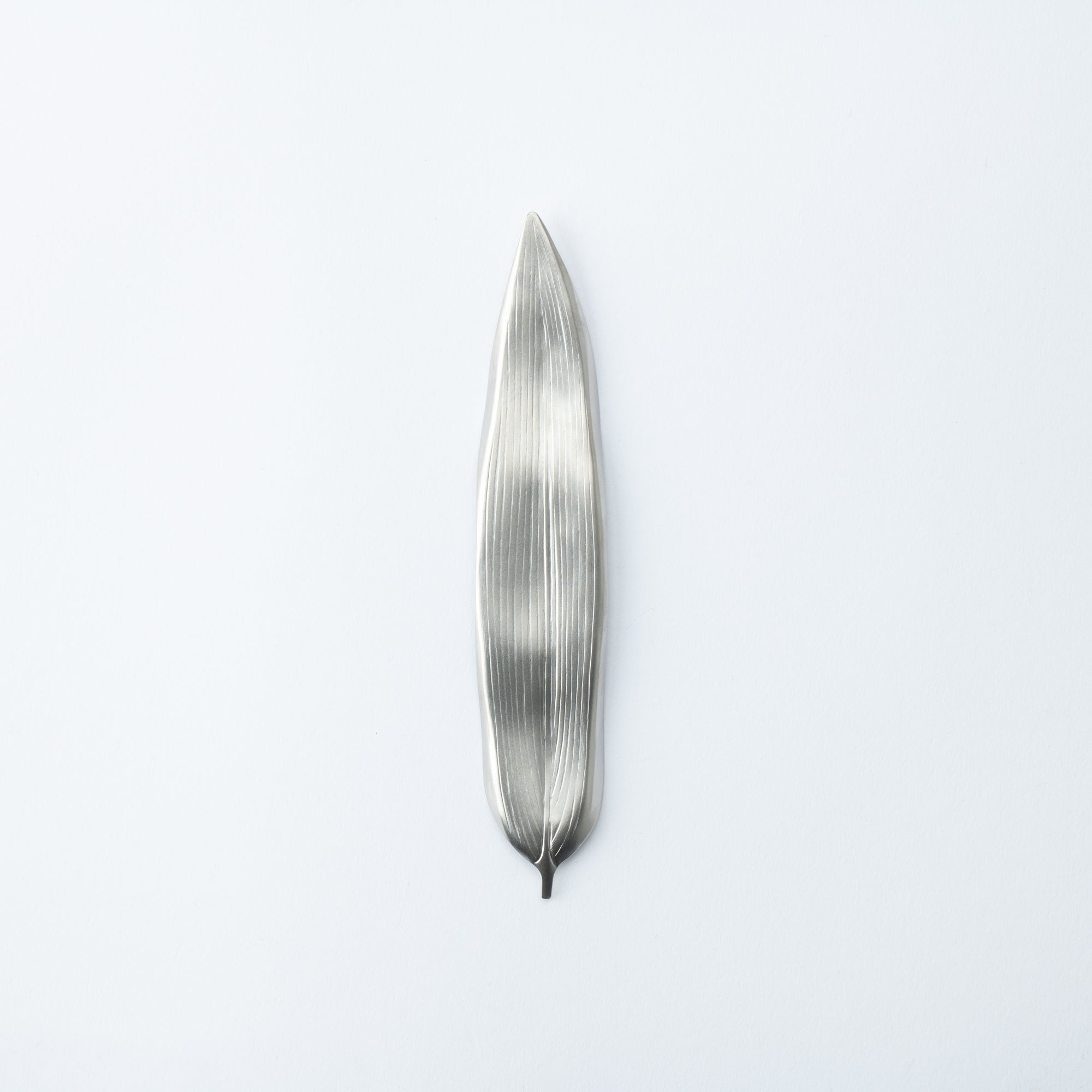
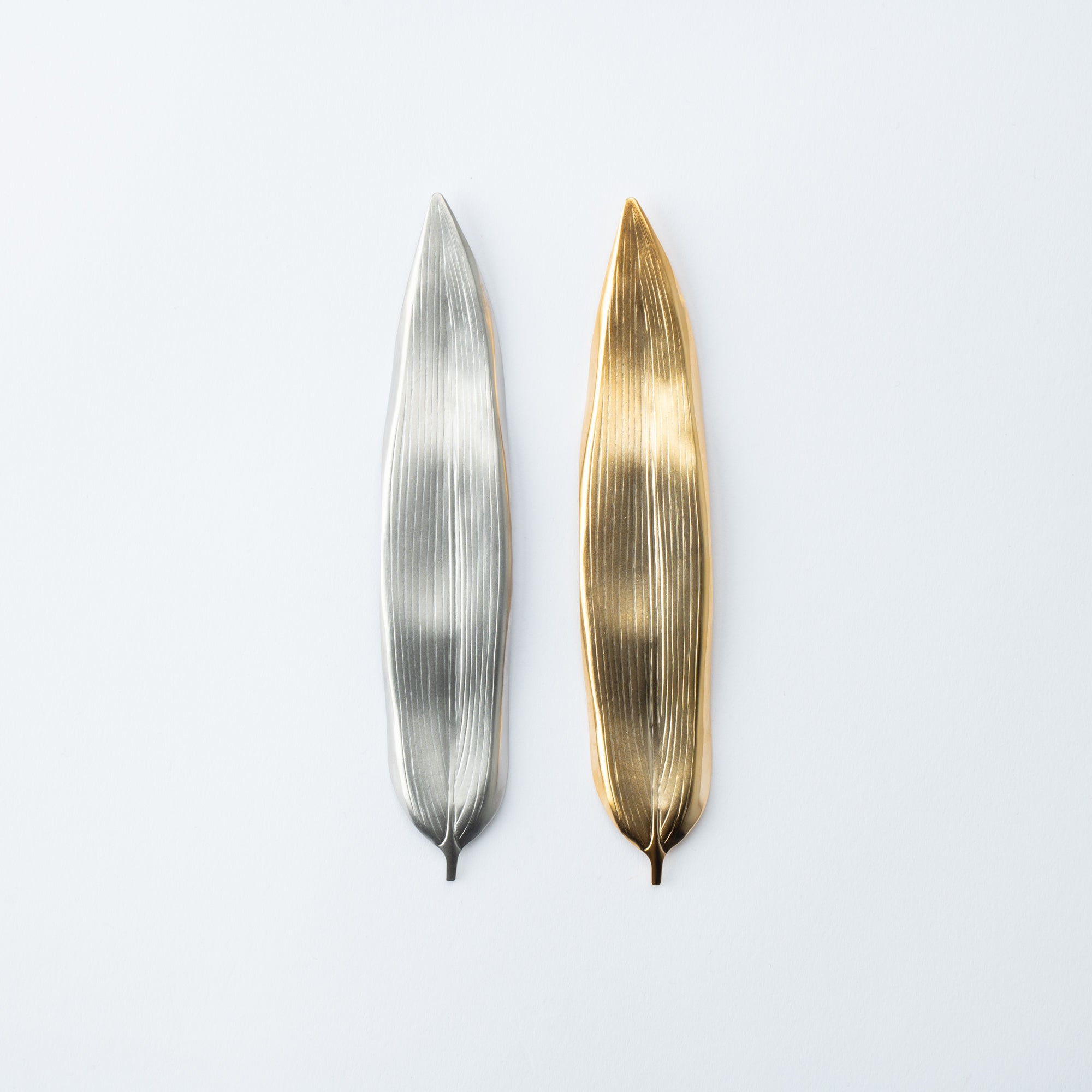
/
Tsubame Hutlery Silver Bamboo Leaf Cutlery Rest
Estimated Shipping Widget will be displayed here!
This is a stainless steel cutlery rest in the shape of a bamboo leaf in silver. It is made in Tsubame Sanjo, which accounts for 90 percent of domestic production of metal tableware.
It expresses the soft thinness, undulation, and curves of a bamboo leaf, and is designed by Kaichiro Yamada, KAICHI DESIGN, which has won awards in Japan and abroad.
The surface is processed to have a slightly rough feel, making it less shiny and more matte and calm. It is large enough to hold not only chopsticks, but also spoons, knives, and forks to place together.
It is a perfect item for everyday use, for entertaining guests, and as a gift for loved ones.
PRODUCT DETAIL
- Quantity: 1 piece
- Dimension: 15cm(5.9in) x 3cm(1.2in)
- Material: Stainless steel
- Origin: Made in Japan - Tsubame Sanjo Metalwork
- Brand: Tsubame Shinko
Choose options














Tsubame Hutlery Silver Bamboo Leaf Cutlery Rest
Sale price$11.00 USD


